HOUSE OF SAXE-COBURG AND GOTHA
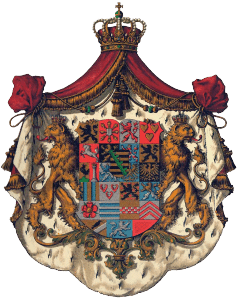
The House of Saxe-Coburg and Gotha (in German, Haus Sachsen Coburg und Gotha) is a German dynasty, in particular, the line of the Saxon House of Wettin that ruled the Ernestine duchies, including the duchy of Saxe-Coburg and Gotha.
Although the House of Coburg reaches back in history to the 1400s, we start our family tree in the latter half of the 18th century with Franz Friedrich Anton, the sixth Duke of Saxe-Coburg-Saalfeld (from 1826 on, the house was called Saxe-Coburg and Gotha). Through the first marriage of Ernst, Franz Anton’s eldest son, to Luise Princess of Saxe-Gotha-Altenburg, the house acquired considerably more territory and importance. The descendants of Franz Friedrich Anton were at the top of several European monarchies. Members of their successor families are currently heads of government in many countries: Belgium through the descendants of King Léopold I, and in the Commonwealth realm through the descendants of Prince Consort Albert. Due to anti-German sentiment in the United Kingdom during World War I, King George V of the United Kingdom and Ireland changed the name of his branch from “Saxe-Coburg and Gotha” to “Windsor” in 1917. The same happened in Belgium, where it became “van België” or “de Belgique.”
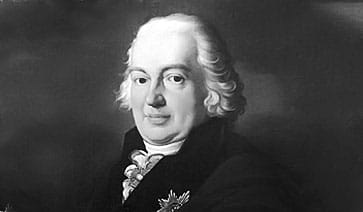
Franz Friedrich Anton
Duke of Saxe-Coburg-Saalfeld, Duke of Saxony (since 1800)
(Coburg, 15 July 1750 – Coburg, 9 December 1806)
Franz Friedrich Anton had to take over a practically ruined duchy. But he was a very talented man and – despite of his lack of money – started to collect engravings of the most excelling artists between the 15th and 18th century, thus founding the Coburg Collection of Graphics with its today’s 220.000 pieces of art. He is a patrilinear ancestor of Queen Elizabeth II of the United Kingdom of Great Britain and Northern Ireland, King Philippe of the Belgians and former tsar Simeon II (1943 – 1946 during the monarchy) and prime minister of Bulgaria (between 2001 and 2005).
Hereditary Prince of Saxe-Coburg-Saalfeld (till 1800)
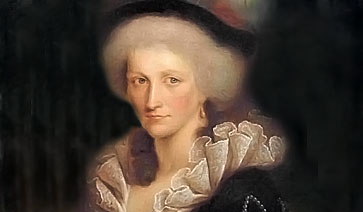
Auguste Karoline Sophie
Duchess of Saxe-Coburg-Saalfeld, Duchess of Saxony (since 1800)
(Saalburg-Ebersdorf, 19 January 1757 – Coburg, 16 November 1831)
Auguste had ten children, born between 1778 and 1792. One was stillborn and two died during their childhood. The other seven were married to European high nobility and these marriages were arranged under strong personal care. Auguste was the maternal grandmother of Queen Victoria of the United Kingdom and Ireland and the paternal grandmother of Albert, Prince Consort.
Princess Reuss
Princess of Ebersdorf
Princess of Saxe-Coburg-Saalfeld, Duchess of Saxony (since 1777)
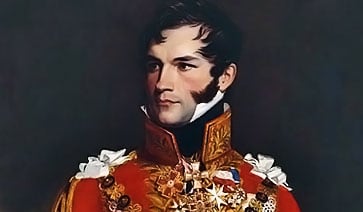
Leopold
Léopold I, King of the Belgians (since 1831)
9(Coburg, 16 December 1790 – Laeken, Brussels, 10 December 1865)
Leopold (Leopold Georg Christian Friedrich) was the youngest son of Duke Franz Friedrich Anton and Duchess Auguste Karoline Sophie of Saxe-Coburg-Saalfeld. Leopold was appointed colonel of a regiment in Russia because of his relationship and finally reached the rank of lieutenant general in the Imperial Russian Army. He excelled in negotiating and diplomatic duties. In 1816 he married Charlotte Augusta, Princess of Wales, who was to become Queen of the United Kingdom. But she died after one year of marriage on the birth of a stillborn son. The widower Leopold stayed in London, neglected the offer to become King of Greece but accepted to become the first King of the Belgians, following Belgium’s independence from the Netherlands in 1831. Thus he was the founder of the Belgian line of the House of Saxe-Coburg and Gotha. His children included Léopold II, King of the Belgians and Carlota, Empress of Mexico. And he was a maternal uncle and adviser of Queen Victoria of the United Kingdom.
Prince of Saxe-Coburg-Saalfeld, Duke of Saxony
Prince of Saxe-Coburg and Gotha, Duke of Saxony (since 1826)
KINGDOM OF BELGIUM - HOUSE OF SAXE-COBURG AND GOTHA
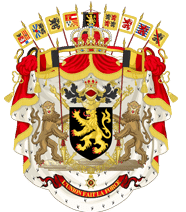
Belgium became independent in 1830, after the Belgian Revolution, in which the Southern Provinces rose up and separated from the United Kingdom of the Netherlands.
Belgium’s independence was proclaimed by the then Provisional Government. The members of the National Congress favored the creation of a constitutional monarchy and parliamentary democracy by a vote of 174 to 13. In 1831, Baron Surlet de Chokier was appointed Regent by the National Congress, whose members ultimately designated Léopold Prince of Saxe-Coburg and Gotha as their first King of the Belgians. Prince Léopold swore allegiance to the Belgian Constitution on 21 July 1831 and took an oath that made him king on the front steps of St. Jacques-sur-Coudenberg Church at Coudenbergh Place in Brussels. July 21 is now celebrated as Belgium’s National Day. All of King Léopold’s successors owe allegiance to the Constitution.
The following lists all of the Belgian monarchs since 1831, when King Léopold I ascended to the throne, after Belgium declared independence from the United Kingdom of the Netherlands in the 1830 Belgian Revolution.
“Episode of the Belgian Revolution of 1830” or “Episode of the September Days of 1830 on the Grand Place of Brussels”
Gustave Wappers (1834), Museum of Ancient Art, Brussels
In addition to linguistic and religious conflicts that arose out of two hundred years of separation, there were social discrepancies between the northern and southern provinces in the United Kingdom of the Netherlands. Unemployment in the south was high, and workers became frustrated. Even liberal bourgeois and Belgian patriots disapproved of the reactionary politics of Willem I King of the Netherlands.
When King Willem I tried to reconquer the lost provinces after the new kingdom was founded, King Léopold I’s Belgian troops, backed by French military forces, came away the winner. The Dutch withdrew, but it was another eight years before they truly accepted Belgium’s independence and signed the Treaty of London.
Léopold I King of the Belgians

Leopold
Léopold I, King of the Belgians (since 1831)
(Coburg, 16 December 1790 – Laeken, Brussels, 10 December 1865)
Leopold (Leopold Georg Christian Friedrich) was the youngest son of Duke Franz Friedrich Anton and Duchess Auguste Karoline Sophie of Saxe-Coburg-Saalfeld. Leopold was appointed colonel of a regiment in Russia because of his relationship and finally reached the rank of lieutenant general in the Imperial Russian Army. He excelled in negotiating and diplomatic duties. In 1816 he married Charlotte Augusta, Princess of Wales, who was to become Queen of the United Kingdom. But she died after one year of marriage on the birth of a stillborn son. The widower Leopold stayed in London, neglected the offer to become King of Greece but accepted to become the first King of the Belgians, following Belgium’s independence from the Netherlands in 1831. Thus he was the founder of the Belgian line of the House of Saxe-Coburg and Gotha. His children included Léopold II, King of the Belgians and Carlota, Empress of Mexico. And he was a maternal uncle and adviser of Queen Victoria of the United Kingdom.
Prince of Saxe-Coburg-Saalfeld, Duke of Saxony
Prince of Saxe-Coburg and Gotha, Duke of Saxony (since 1826)
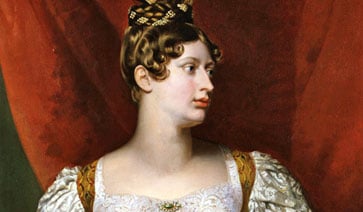
Charlotte Augusta
Princess of Wales
1(London, 7 January 1796 – Claremont House, Esher, Surrey, 6 November 1817)
Charlotte Augusta was the only child of George, Prince of Wales and later King George IV and Caroline of Brunswick. Had she outlived her father and her grandfather, King George III, she would have become Queen of the United Kingdom. She was the only legitimate grandchild of King George III who was very interested in offering her an education suitable for her succession to the throne. She decided against Willem, the Hereditary Prince of Orange, and instead married Léopold I, Prince of Saxe-Coburg-Saalfeld. To the great distress of her husband and the British population, she died in childbirth at the age of 21.
Princess of the United Kingdom
Princess of Saxe-Coburg and Gotha, Duchess or Saxony
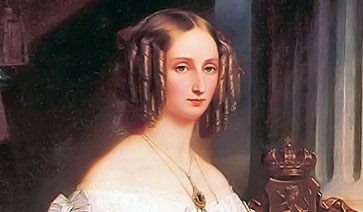
Louise
Queen of the Belgians (since 1832)
2(Palermo, Sicily, 3 April 1812 – Ostende, Belgium, 11 October 1850)
Louise (Louise Marie Thérèse Charlotte Isabelle) was the eldest daughter of the future King of the French Louis-Philippe I and his wife Maria Amalia of the Two Sicilies. Louise was a member of the reigning House of Bourbon. On her father’s side, she was a descendant of Philippe Égalité, Philippe d’Orléans, Regent for Louis XV, Madame de Montespan, and of Louis XIV and Philippe I, Duke of Orléans – both the sons of Louis XIII. On her mother’s side, she was a descendant of Maria Theresa of Austria and Catherina de’ Medici. When her father succeeded to the throne, under the name Louis-Philippe I, King of the French, Louise became a “Princesse d’Orléans” at the age of eighteen. When she married King Léopold I, she became Queen Consort of the Belgians as the second wife of King Léopold I. Louise is an ancestor of the present King of Belgium, of the Italian Royal Pretender (Prince of Naples), the Grand Duke of Luxembourg, and the present Prince Napoléon – head of the Imperial House of France.
Mademoiselle d’Orléans (Princess of the Blood)
Princess of Orléans (since 1830)
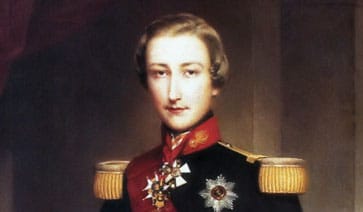
Léopold
Léopold II King of the Belgians (since 1865)
2(Brussels, 9 April 1835 – Laeken, Brussels, 17 December 1909)
Léopold (Léopold Louis Philippe Marie Victor) wanted a kingdom rivaling other European countries and used his marriage with a Habsburg archduchess to give it more prestige. He was responsible for making the Congo a colonial empire, allowing him to accumulate enormous private wealth while the population of the Congo had suffered indescribably. Under his reign Brussels became a contemporary capital, as he commissioned parks and impressive buildings.
Prince of Belgium
Prince of Saxe-Coburg and Gotha, Duke of Saxony
Duke of Brabant (since 1844)
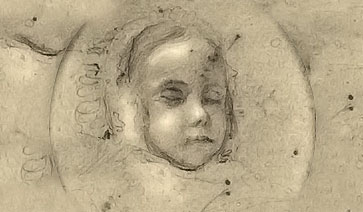
Louis Philippe
Crown Prince of Belgium
1(Laeken, Brussels, (24 July 1833 – Laeken, Brussels, 16 May 1834)
Louis Philippe (Louis Philippe Léopold Victor Ernest) was a year old when he died of sinusitis. He was not titled Duke of Brabant, as this title was not yet invented for an heir apparent. His younger brother, Léopold succeeded him as crown prince, and later succeeded their father as Léopold II, King of the Belgians.
Prince of Saxe-Coburg and Gotha, Duke of Saxony
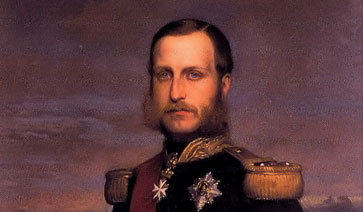
Philippe
Count of Flanders (since 1840)
3(Laeken, Brussels 24 March 1837 – Brussels, 17 November 1905)
Philippe (Philippe Eugène Ferdinand Marie Clément Baudouin Léopold Georges) was the second surviving son of Léopold I, King of the Belgians and his wife Louise d’Orléans. He was the heir presumptive to the Belgian throne until the birth of his nephew who later died in 1869 when he regained his position. In 1866, after the abdication of Alexandru Ioan Cuza, Prince of Romania, he was offered the throne of Romania but he refused. In 1867 he married Maria Luise, the daughter of Karl Anton, Prince of Hohenzollern-Sigmaringen and his wife Josephine, born Princess of Baden.
Prince of Belgium
Prince of Saxe-Coburg and Gotha, Duke of Saxony
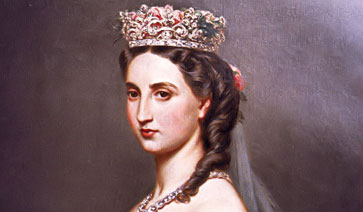
Marie Charlotte
The Empress of Mexico (since 1864)
4(Laeken, Brussels, 7 June 1840 – Meise, Belgium 19 January 1927)
Charlotte (Marie Charlotte Amélie Augustine Victoire Clémentine Léopoldine married her second cousin Maximilian, Archduke of Austria, the younger brother of Emperor Franz Josef of Austria. While her husband served as governor of the provinces of Lombardy and Venetia, the couple lived in Italy, but they lacked real power. So Maximilian finally accepted to take the throne of Mexico while supported by French troops in action and to build up a second Mexican Empire. But soon the French troops withdrew and Carlota left Mexico to search for help in Europe – in vain. Her husband failed at the end and was executed. Carlota suffered a profound collapse and never returned to Mexico.
Princess of Belgium
Princess of Saxe-Coburg and Gotha, Duchess of Saxony
Archduchess Charlotte of Austria
Princess Royal of Hungary and Bohemia (since 1857)
Léopold II King of the Belgians

Léopold
Léopold II King of the Belgians (since 1865)
2(Brussels, 9 April 1835 – Laeken, Brussels, 17 December 1909)
Léopold (Léopold Louis Philippe Marie Victor) wanted a kingdom rivaling other European countries and used his marriage with a Habsburg archduchess to give it more prestige. He was responsible for making the Congo a colonial empire, allowing him to accumulate enormous private wealth while the population of the Congo had suffered indescribably. Under his reign Brussels became a contemporary capital, as he commissioned parks and impressive buildings.
Prince of Belgium
Prince of Saxe-Coburg and Gotha, Duke of Saxony
Duke of Brabant (since 1844)
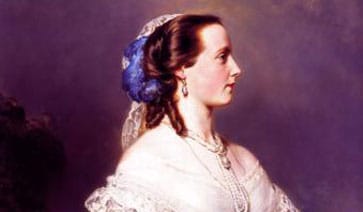
Marie Henriette
The Queen of the Belgians (since 1853)
(Pest, Hungary 23 August 1836 – Spa, Belgium, 19 September 1902)
Marie Henriette (Marie Henriette Anne) married the heir to the throne of the Belgians, Prince Léopold when she was 16 and he 18 years of age. As her husband had protestant roots, she was especially esteemed because of her desired qualities: She came from a Roman Catholic and prestigious dynasty: the name Habsburg was an important quality. Her father was Archduke Joseph, Palatine of Hungary, and her mother Duchess Maria Dorothea of Wurttemberg.
Archduchess of Austria
The Duchess of Brabant (since 1853)
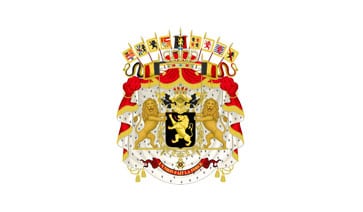
Léopold Ferdinand
Duke of Brabant (since 1865)
2(Laeken, Brussels, 12 June 1859 – Laeken, Brussels, 22 January 1869)
Léopold Ferdinand (Léopold Ferdinand Élie Victor Albert) was the second child and only son and heir apparent of Léopold II of Belgium and his wife Marie Henriette of Austria. Léopold was named for his grandfather and for his father’s cousins: Prince Ferdinand of Saxe-Coburg and Gotha, Queen Victoria of the United Kingdom, and Prince Albert, the Prince Consort. Léopold was preceded in birth by one sister, Louise, and followed by two more sisters, Stéphanie, and Clémentine, their parents’ last hope for another son. Clémentine was born after Léopold’s sudden and deeply demoaned death at the age of ten.
Prince of Saxe-Coburg and Gotha, Duke of Saxony
Count of Hainaut
Prince of Belgium
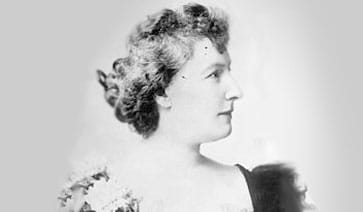
Louise
Princess of Saxe-Coburg and Gotha (Koháry) (since 1875)
1(Brussels, 18 February 1858 – Wiesbaden, 1 March 1924)
Louise (Louise Marie Amélie) was the eldest daughter of Léopold II and his wife, Marie Henriette of Austria. In 1875 she married Philipp, Prince of Saxe-Coburg and Gotha (Kohary), her second cousin, in Brussels. They had two children. The couple became estranged because of Louise’s luxurious lifestyle at the court of Vienna. The marriage ended when Louise left her husband for a Count Mattachich and took her daughter with her. She later left her mother at the advice of her fiancé, the Ernst Günter, Duke of Schleswig-Holstein-Sonderburg-Augustenburg.
Princess of Belgium
Princess of Saxe-Coburg and Gotha, Duchess of Saxony
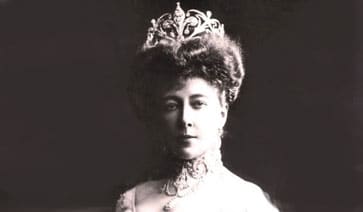
Stéphanie
Princess Lónyay of Nagy-Lónya (since 1917)
3(Laeken, Brussels, 21 May 1864 – Györszentmarton, Hungary, 23 August 1945)
In 1881, Stéphanie (Stéphanie Clotilde Louise Herminie Marie Charlotte) married the heir apparent of the Habsburg dynasty, Archduke Rudolf. In the beginning the marriage was said to be happy, but in 1889 Rudolf and his mistress Baroness Mary Vetsera were found shot to death. In 1900 at Miramare, Italy (then part of the Austro-Hungarian Empire), Stéphanie married Count Elemér Lónyay de Nagy-Lónya et Vásáros-Namény, a Hungarian count of low rank who, in 1917, was elevated by the Emperor of Austria to the rank of a “Fürst.” Together they settled in his castle in western Hungary, today’s Slovakia, until the advancing Red Army forced them to flee their estate.
Princess of Belgium
Princess of Saxe-Coburg and Gotha, Duchess of Saxony
The Crown Princess of Austria (since 1881)
The Dowager Crown Princess of Austria (since 1889)
Countess Lónyai (since 1900)
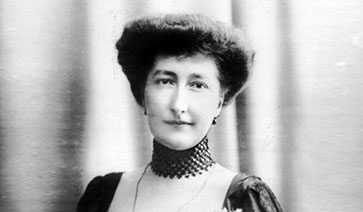
Clémentine
Princess Napoléon (since 1926)
4(Laeken, Brussels, 30 July 1872 – Nice, France, 8 March 1955)
Clémentine (Clémentine Albertine Marie Léopoldine married Victor, Prince Napoléon Bonaparte (1862–1926), the Bonapartist pretender to the throne of France as Napoleon V. She married after the death of her father, King Léopold II of the Belgians, who disapproved the choice of his youngest daughter. As she had a better relationship with him than her elder sisters, she was committed to assume the role of the Queen at the Brussels’ Court after the departure of her mother. When her father died in 1909, Clémentine got the permission to marry the chosen one from the new monarch, King Albert I. The couple had two children.
Princess of Belgium
Princess of Saxe-Coburg and Gotha, Duchess of Saxony
CHANGE OF SUCCESSION
In 1869, Prince Léopold, heir apparent and Léopold II’s only son, died from pneumonia at the age of 10 after falling into a pond.
Upon his death, Léopold II was succeeded by the heir apparent, his nephew Albert, whose eldest son would later succeed him as Léopold III.
Albert I King of the Belgians
King Albert I and Queen Elisabeth of the Belgians, received by Pope Pius XI, about 1926

Philippe
Count of Flanders (since 1840)
(Laeken, Brussels, 24 March 1837 – Brussels, 17 November 1905)
Philippe (Philippe Eugène Ferdinand Marie Clément Baudouin Léopold Georges) was the second surviving son of Léopold I, King of the Belgians and his wife Louise d’Orléans. He was the heir apparent to the Belgian throne until the birth of his nephew (Léopold II’s only son), who died in 1869. Philippe then regained his position. In 1866, after the abdication of Alexandru Ioan Cuza, Prince of Romania, he was offered the throne of Romania but refused. In 1867 he married Maria Luise, the daughter of Karl Anton, Prince of Hohenzollern-Sigmaringen (1811–1885) and his wife Josephine, Princess of Baden (1813–1900).
Prince of Belgium
Prince of Saxe-Coburg and Gotha, Duke of Saxony
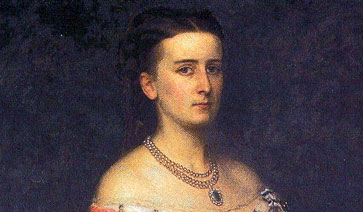
Marie
The Dowager Countess of Flanders (1905)
(Sigmaringen, Hohenzollern-Sigmaringen, 17 November 1845 – Belgium, 26 November 1912)
Marie Luise (Marie, Luise, Alexandrine, Caroline) was a daughter of Karl Anton Prince of Hohenzollern-Sigmaringen, the Prime minister of Prussia and his wife, Josephine Princess of Baden. She was a younger sister of Karl, Carol I the King of Romania. Because Marie was Catholic, she was not suited to become the wife of the future King Edward VII of the United Kingdom and Ireland, and instead married Prince Philippe, Count of Flanders, the second son of King Léopold I of the Belgians and Louise-Marie of Orléans. She took a keen interest in the fine arts.
Princess of Hohenzollern-Sigmaringen
Princess of Belgium, The Countess of Flanders (since 1867)
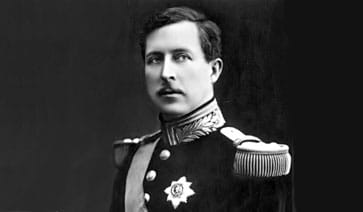
Albert
Albert I, King of the Belgians
5(Brussels, April 8, 1875 – Marche-les-Dames, Belgium, February 17, 1934)
Albert (Albert Léopold Clément Marie Meinrad) was his parents’ youngest son. When the only legitimate son of his uncle and his older brother Baudouin died, he became second in line to the Belgian crown after his father and then began to prepare himself for succession to the throne. In 1900 he married Elisabeth, Duchess of Bavaria. The couple was popular in Belgium because of their lifestyle and their harmonious family life. During World War I, when Belgium suffered under German occupation, King Albert fought alongside his troops, facing the same dangers as an ordinary soldier. Fearing the dreadful consequences of the battles on his country, he tried to get a negotiated peace, but in vain. At the end of the war, Albert led the final offensive of the war that liberated his occupied country. He returned to be welcomed in his capital as a hero.
Prince of Belgium
Prince of Saxe-Coburg and Gotha, Duke of Saxony
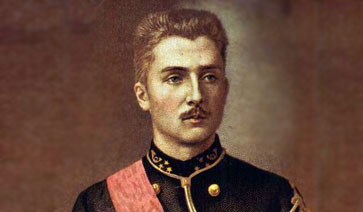
Baudouin
Prince of Belgium
1(Brussels, 3 June 1869 – Brussels, 23 January 1891)
Baudouin (Baudouin Léopold Philippe Marie Charles Antoine Joseph Louis) was a welcome son, as his birth secured the Belgian crown, after King Léopold II’s only son died at an early age that same year . At the age of 21, Baudouin visited his ill sister, contracted influenza, and died of illness and a fatal injury.
Prince of Saxe-Coburg and Gotha, Duke of Saxony
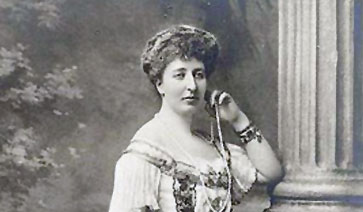
Henriette Marie
Duchess of Vendôme (since 1896)
2(Brussels, 30 November 1870 – Sierre, Valais, Switzerland, 28 March 1948)
Henriette Marie had an older twin sister, Josephine Marie who died at the age of 6 weeks. In 1896 she married Emmanuel Prince of Orléans, 8th Duke of Vendôme (1872 – 1931). Emmanuel was a son of Ferdinand Duke of Alençon and Sophie Charlotte Duchess of Bavaria, and was a great-grandson of King Louis-Philippe I of France. Henriette Marie was very interested in sports, especially shooting. It is said that she hunted grizzly bears in the Rocky Mountains with her husband. The couple had four children.
Princess of Belgium
Princess of Saxe-Coburg and Gotha, Duchess of Saxony
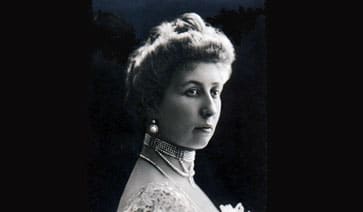
Joséphine Caroline
Princess of Hohenzollern (since 1894)
4(Brussels, 18 October 1872 – Namur (Belgium), 6 January 1958)
In 1894, Josephine Caroline married her maternal first cousin Karl Anton Prince of Hohenzollern-Sigmaringen. The couple had four children and lived at the castle of Namedy (which today belongs to Andernach in the Rhine Palatinate). The castle served as a military hospital during World War I.
Princess of Belgium
Princess of Saxe-Coburg and Gotha, Duchess of Saxony
King Albert’s Family

Albert
Albert I King of the Belgians (since 1909)
(Brussels, April 8, 1875 – Marche-les-Dames, Belgium, February 17, 1934)
Albert (Albert Léopold Clément Marie Meinrad) was his parents’ youngest son. When the only legitimate son of his uncle and his older brother Baudouin died, he became second in line to the Belgian crown after his father and then began to prepare himself for succession to the throne. In 1900 he married Elisabeth, Duchess of Bavaria. The couple was popular in Belgium because of their lifestyle and their harmonious family life. During World War I, when Belgium suffered under German occupation, King Albert fought alongside his troops, facing the same dangers as an ordinary soldier. Fearing the dreadful consequences of the battles on his country, he tried to get a negotiated peace, but in vain. At the end of the war, Albert led the final offensive of the war that liberated his occupied country. He returned to be welcomed in his capital as a hero.
Prince of Belgium
Prince of Saxe-Coburg and Gotha, Duke of Saxony
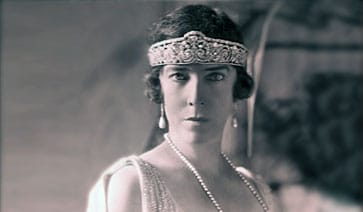
Elisabeth
Queen Elisabeth of Belgium (since 1934)
(Possenhofen Castle, Bavaria, 25 July 1876 – Brussels, 23 November 1965)
Elizabeth (Elisabeth Gabriele Valérie Marie) was the daughter of Karl-Theodor, Duke of Bavaria, and head of a cadet branch of the Bavarian royal family. Karl-Theodor was a very reputable ophthalmologist. Elisabeth was named in honour of her father’s sister, Empress Elisabeth of Austria, better known as Sissi. Her mother was Maria Josepha of Portugal, daughter of the exiled Miguel I of Portugal. She had a keen interest in fine arts and literature, but also in medicine. Queen Elisabeth is said to have worked as a nurse at the front. King Albert I and Elisabeth had three children. She was the mother of King Léopold III of Belgium and of Queen Marie José of Italy, and grandmother of Kings Baudouin and Albert II of the Belgians.
Duchess in Bavaria
Princess of Belgium (since 1900)
The Queen of the Belgians (since 1909)
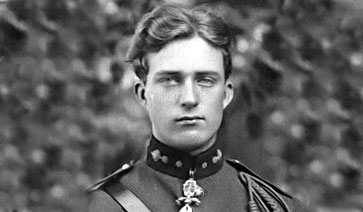
Léopold
The King Léopold of Belgium (1951 – 1983)
1(Brussels, 3 November 1901 – Woluwe-Saint-Lambert, Belgium, 25 September 1983)
Léopold (born as Léopold Philippe Charles Albert Meinrad Hubertus Maria Miguel) Duke of Brabant married Astrid, Princess of Sweden in 1926, out of love rather than politics. He lost his wife, with whom he had three children, in a car accident in 1934. Upon the death of his father King Albert I in 1934, he became King of the Belgians. Being a prisoner of the Germans in his invaded country in 1941, his second marriage to Lilian Baels was invalid under Belgian law. They also had three children. In 1944 the Germans deported the royal family, but they were freed by the Americans in 1945. Due to controversy over his conduct during the war and his disputed surrender in 1940, Léopold III was unable to return to Belgium and spent the next six years in exile in Switzerland. Léopold’s brother Prince Charles had been established as Prince Regent by the Legislature in 1944 until his return in 1950. In 1951 Léopold abdicated in favour of his heir apparent, his son Baudouin.
Prince of Belgium
Prince of Saxe-Coburg and Gotha, Duke of Saxony
Duke of Brabant (since 1909)
Léopold III, King of the Belgians (1934 – 1944)
The King Léopold of Belgium (1944 – 1950)
The King of the Belgians (1950 – 1951)
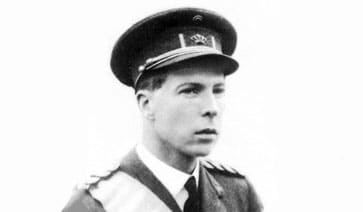
Charles
Count of Flanders
2(Brussels, 10 October 1903 – Raversijde, Belgium, 1 June 1983)
Charles (Charles Théodore Henri Antoine Meinrad) was appointed Regent from 1944 to 1950. His older brother King Léopold III of Belgium had been deported by the Germans. After World War II ended, Léopold’s position came under scrutiny, and he was opposed because of his second marriage. Charles’s regency was dominated by the events of the German occupation and the controversy surrounding Léopold III, which had an impact for decades to come. During Charles’s regency, Belgium managed to jump start its national economy with American assistance provided under the Marshall Plan; women obtained the right to vote in parliamentary elections in 1948; Benelux was formed; Belgium became a member state of the United Nations; and the North Atlantic Treaty was signed.
Prince of Belgium
Prince of Saxe-Coburg and Gotha, Duke of Saxony
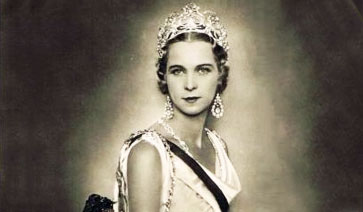
Marie José
Queen of Italy (for 1 month in 1946)
3(Ostend, Belgium, 4 August 1906 – Thones, Switzerland, 27 January 2001)
Marie José (Marie José Charlotte Sophie Amélie Henriette Gabrielle) was brought up to marry a royal Catholic and so, in 1930, she married Umberto, Crown Prince of Savoy, who was to become the King of Italy. In 1939 she was made President of the Red Cross in Italy. The couple was never happy and separated after the abolition of the Italian monarchy. She spent most of her life with her four children in Switzerland.
Princess of Belgium
Princess of Saxe-Coburg and Gotha, Duchess of Saxony
Princess of Piemont (since 1930)
Léopold III King of the Belgians
Léopold, Hereditary Prince of Belgium and Princess Astrid on their wedding day, 1926
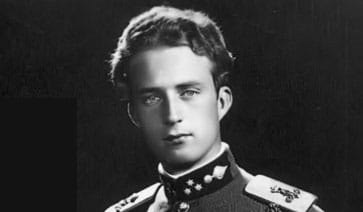
Léopold
The King Léopold of Belgium (1951 – 1983)
1(Brussels, 3 November 1901 – Woluwe-Saint-Lambert, Belgium, 25 September 1983)
Léopold (born as Léopold Philippe Charles Albert Meinrad Hubertus Maria Miguel) Duke of Brabant married Astrid, Princess of Sweden in 1926, out of love rather than politics. He lost his wife, with whom he had three children, in a car accident in 1934. Upon the death of his father King Albert I in 1934, he became King of the Belgians. Being a prisoner of the Germans in his invaded country in 1941, his second marriage to Lilian Baels was invalid under Belgian law. They also had three children. In 1944 the Germans deported the royal family, but they were freed by the Americans in 1945. Due to controversy over his conduct during the war and his disputed surrender in 1940, Léopold III was unable to return to Belgium and spent the next six years in exile in Switzerland. Léopold’s brother Prince Charles had been established as Prince Regent by the Legislature in 1944 until his return in 1950. In 1951 Léopold abdicated in favour of his heir apparent, his son Baudouin.
Prince of Belgium
Prince of Saxe-Coburg and Gotha, Duke of Saxony
Duke of Brabant (since 1909)
Léopold III, King of the Belgians (1934 – 1944)
The King Léopold of Belgium (1944 – 1950)
The King of the Belgians (1950 – 1951)
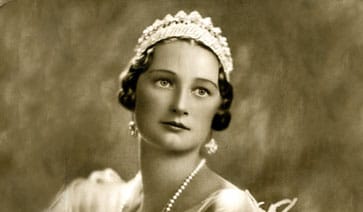
Astrid
Queen Consort of the Belgians (from 1934)
1(Stockholm, 17 November 1905 – Küssnacht, Schwyz, Switzerland, 29 August 1935)
Astrid (Astrid Sofia Lovisa Thyra) was a descendant of the House of Bernadotte. Her father was Carl, Duke of Västergötland, the younger brother of King Gustav V of Sweden. Her mother was Ingeborg, Princess of Denmark, the sister of two kings: Christian X of Denmark and Haakon VII of Norway. She was raised Lutheran. When she married the Crown Prince Léopold in 1926, she converted to Catholicism by conviction. She was devoted to her family and interested in improving social conditions. Astrid died prematurely in a car accident and was deeply mourned.
Princess of Sweden
Princess of Belgium, Duchess of Brabant (from 1926)
Issue:
Josephine-Charlotte, Grand Duchess of Luxembourg
King Baudouin of the Belgians
King Albert II of the Belgians
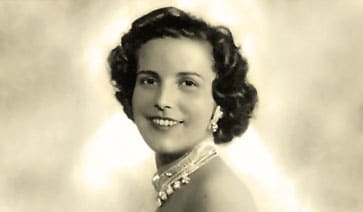
Mary Lilian Baels
Princess of Réthy, Princess of Belgium (since 1941)
2(London, 28 November 1916 – Waterloo, Belgium, 7 June 2002)
Mary Lilian (Mary Lilian Henriette Lucie Josephine Ghislaine) was born in the United Kingdom to a ship owner and politician. She was a well-educated young lady with interests in art, literature, and sports. She met King Léopold in 1940. After the German invasion of Belgium, during his house arrest in 1941, the King married her in a secret, religious ceremony contradictory to Belgian law. He gave her the title Princess of Réthy. The couple had three children.
Issue:
Prince Alexander of Belgium
Princess Marie-Christine of Belgium
Princess Maria-Esmeralda of Belgium
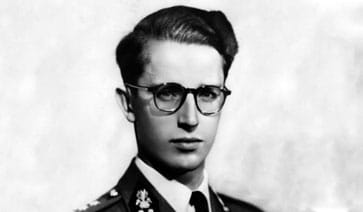
Baudouin
King of the Belgians (since 1951)
2(Stuyvenberg Castle, Belgium, 7 September 1930 – Villa Astrida, Motril, Spain, 31 July 1993)
Baudouin (Baudouin Albert Charles Léopold Axel Marie Gustave) took his constitutional oath before the United Chambers of the Belgian Parliament in 1950 and ascended to the throne after the abdication of his father, King Léopold, in 1951. He was a devout Catholic and reigned for 42 years. During his reign the Belgian Congo achieved independence. In 1960 Baudouin married Doña Fabiola de Mora y Aragón, a Spanish aristocrat. The couple remained childless. Baudouin was a popular monarch in Belgium.
Prince of Belgium
Prince Royal (1950)
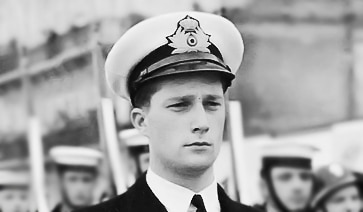
Albert
King Albert II of Belgium (since 2013)
3(Laeken, Brussels, 6 June 1934)
Albert (Albert Félix Humbert Théodore Christian Eugène Marie) married Donna Paola Ruffo di Calabria, the daughter of Fulco VIII, Prince Ruffo di Calabria, 6th Duke of Guardia Lombarda and his wife, Countess Luisa Gazelli di Rossana e di Sebastiano (1896–1989). They have three children, two sons and a daughter. Being the younger brother of King Baudouin, Prince Albert was the heir apparent to the throne. His son Prince Philippe was groomed to be Baudouin’s successor, once it became clear that the King would have no children to succeed him. In 2013 Albert II announced his forthcoming abdicated for health reasons.
Albert
Prince of Belgium
Prince of Liège
The King of the Belgians (1993 – 2013)
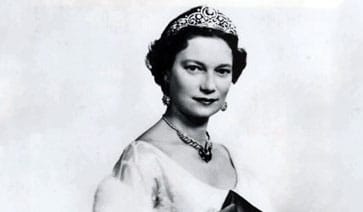
Joséphine Charlotte
The Grand Duchess of Luxembourg (1964 – 2000)
1(Brussels, 11 October 1927 – Fischbach, Luxemburg, 10 January 2005)
In 1953, Joséphine Charlotte (Joséphine Charlotte Ingeborg Elisabeth Marie-José Marguerite Astrid), the elder sister of Léopold and Albert, married Prince Jean, who at the time was the Hereditary Grand Duke and heir apparent to the throne of Luxembourg. Although politically motivated, it was a happy bond. During their 52-year marriage, the royal couple had five children. Joséphine Charlotte was involved in many social, cultural, and humanitarian duties.
Princess of Belgium
The Hereditary Grand Duchess of Luxembourg (1953 – 1964)
Grand Duchess Joséphine-Charlotte of Luxembourg (2000 – 2005)
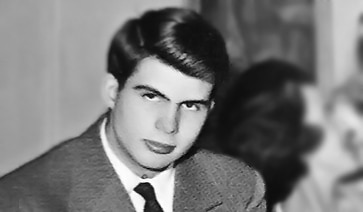
Alexander
Prince of Belgium
4(Laeken, Brussels 18 July 1942 – Sint-Genesius-Rode, Belgium, 29 November 2009)
Alexander (Alexander Emmanuel Henri Albert Marie Léopold) was the eldest child of the second marriage of King Léopold III of Belgium. His mother was Lilian, Princess of Réthy. The late King Baudouin of Belgium and former King Albert II of Belgium were his two older half-brothers. Grand Duchess Joséphine-Charlotte of Luxembourg was his older half-sister.
Prince of Belgium

Marie-Christine
Princess of Belgium
5(Laeken, 6 February 1951)
Marie-Christine (Marie-Christine Daphné Astrid Elisabeth Léopoldine) is a member of the Belgian Royal Family and a half-sister of King Albert II of the Belgians. Her father was King Léopold III of the Belgians, and her mother was his second wife, the former Lilian Baels. Although the former Miss Baels was not given the style of Her Majesty with the prefix of Queen of Belgium, she and her children, including Marie-Christine, are styled as Royal Highness and Prince/Princess of Belgium.
Princess of Belgium
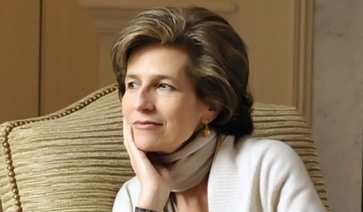
Marie-Esméralda
Lady Moncada
6(Laeken, 30 September 1956)
Marie-Esméralda (Marie-Esméralda Adelaide Lilian Anna Léopoldine) is the youngest child of the late Léopold III of Belgium and his second wife Lilian Baels. Her half-siblings include the late King Baudouin of Belgium, Belgium’s former monarch King Albert II, who is also Marie-Esméralda’s godfather, and the late Josephine-Charlotte, Grand Duchess of Luxembourg. A journalist, she writes under the professional name of Esmeralda de Réthy.
Princess of Belgium
Baudouin, King of the Belgians
Baudouin, King of Belgium and Queen Fabiola

Baudouin
King of the Belgians (since 1951)
2(Stuyvenberg Castle, Belgium, 7 September 1930 – Villa Astrida, Motril, Spain, 31 July 1993)
Baudouin (Baudouin Albert Charles Léopold Axel Marie Gustave) took his constitutional oath before the United Chambers of the Belgian Parliament in 1950 and ascended to the throne after the abdication of his father, King Léopold, in 1951. He was a devout Catholic and reigned for 42 years. During his reign the Belgian Congo achieved independence. In 1960 Baudouin married Doña Fabiola de Mora y Aragón, a Spanish aristocrat. The couple remained childless. Baudouin was a popular monarch in Belgium.
Prince of Belgium
Prince Royal (1950)

Fabiola
Queen Fabiola of Belgium (since 1993)
(Madrid, Spain, 11 June 1928 – Stuyvenberg Castle, Laeken, Belgium, 5 December 2014)
Fabiola de Mora y Aragón was born in Madrid, Spain, the fourth daughter of Gonzalo de Mora y Fernández, Riera y Del Olmo, 4th Marquess of Casa Riera, 2nd Count of Mora (1887–1957) and his wife, Blanca de Aragón y Carrillo de Albornoz, Barroeta-Aldamar y Elío (1892–1981). Fabiola is a devout Roman Catholic and in 1960 married Baudouin, King of the Belgians. She was educated as a hospital nurse and has always been interested in social causes, especially in the Third World. She published an album of 12 fairy tales. The royal couple remained childless, as Fabiola lost five children to miscarriage.
Doña Fabiola de Mora y Aragón
The Queen of the Belgians (since 1960)
CHANGE OF SUCCESSION
Baudouin died a highly esteemed king, who served Belgium and its people for a period of 42 years. He always felt responsible for his subjects and was a popular head of state. He formed the King Baudouin Foundation to improve living conditions and social welfare for Belgium’s people. Half a million people came to pay their respects at his funeral, even Queen Elisabeth from the United Kingdom of Great Britain and Northern Ireland. As he and Fabiola did not have any children, the crown passed on to his brother Albert, the Prince of Liège and heir apparent.
Albert II King of the Belgians
King Albert II and Queen Paola of Belgium
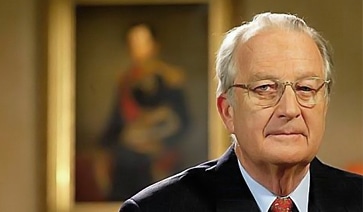
Albert
King Albert II of Belgium (since 2013)
3(Laeken, Brussels, 6 June 1934)
Albert (Albert Félix Humbert Théodore Christian Eugène Marie) married Donna Paola Ruffo di Calabria, the daughter of Fulco VIII, Prince Ruffo di Calabria, 6th Duke of Guardia Lombarda and his wife, Countess Luisa Gazelli di Rossana e di Sebastiano (1896–1989). They have three children, two sons and a daughter. Being the younger brother of King Baudouin, Prince Albert was the heir apparent to the throne. His son Prince Philippe was groomed to be Baudouin’s successor, once it became clear that the King would have no children to succeed him. In 2013 Albert II announced his forthcoming abdicated for health reasons.
Prince of Belgium
Prince of Liège
The King of the Belgians (since 1993 – 2013)
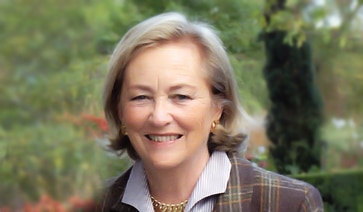
Paola
Queen Paola of Belgium (since 2013)
(Forte dei Marmi, Tuscany, Italy, 11 September 1937)
Paola (Paola Margherita Maria Antonia Consiglia Ruffo) was born in Forte dei Marmi, Tuscany, Italy, as the youngest child of the World War I Italian pilot Fulco VIII, Prince Ruffo di Calabria, 6th Duke of Guardia Lombarda (1884–1946). Her mother was Luisa Gazelli dei Conti di Rossana e di Sebastiano (1896–1989), a matrilineal descendant of the Marquis de La Fayette, and a hero of the American Independence and the French Revolution. Paola and her husband Albert met at the inauguration of Pope John XXIII in the Vatican Palace in 1958. The couple has three children, the eldest of whom Philippe has been King of the Belgians since 2013.
Donna Paola Ruffo di Calabria
Princess of Liège (since 1959)
The Queen of the Belgians (1993 – 2013)
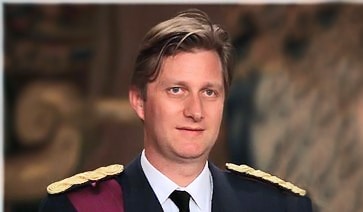
Philippe
The King of the Belgians (since 2013)
1(Brussels, 15 April 1960)
Philippe (Philippe Léopold Louis Marie) is the reigning King of the Belgians, having ascended the throne on 21 July 2013. He is the oldest child of King Albert II, whom he succeeded upon Albert’s abdication for health reasons, and Queen Paola. After his education at the Belgian Royal Military Academy, he studied in Oxford and graduated with a degree in political science from Stanford University in California. In 1999, Philippe married Countess Mathilde d’Udekem d’Acoz, with whom he has four children. King Philippe’s older daughter, Princess Elisabeth, is next in the line of succession.
Prince of Belgium
Prince of Brabant
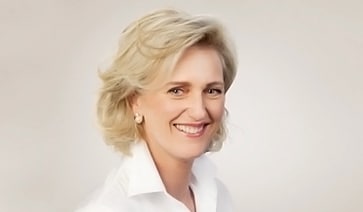
Astrid
The Archduchess of Austria-Este (since 1996)
2(Laeken, Brussels, 5. Juni 1962)
In 1984, Astrid (Astrid Joséphine-Charlotte Fabrizia Elisabeth Paola Marie) married Lorenz, Archduke of Austria-Este, Archduke of Austria, Prince Royal of Hungary and Bohemia (b. 1955). Lorenz is the head of the Austria-Este branch of the House of Habsburg and was made a Prince of Belgium by royal decree in 1995. They have five children, two sons and three daughters. Astrid served as President of the Belgian Red Cross until 2007 and is a member of the Honorary Board of the International Paralympic Committee.
Princess of Belgium
Princess of Liège
Archduchess of Austria-Este (1984 – 1996)
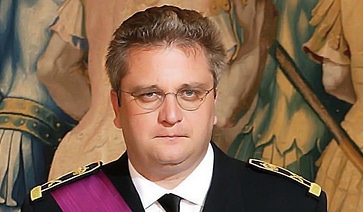
Laurent
Prince of Belgium
3(Laeken, Brussels, 19 October 1963)
Laurent (Laurent Benoît Baudouin Marie) is the son of King Albert II and Queen Paola, and the brother of the current Belgian monarch, King Philippe of the Belgians. In 2003, he married Claire Coombs (born 1974), an Anglo-Belgian former real estate agent, who was made Princess Claire of Belgium, eleven days before their marriage. Laurent is involved with the welfare of wild animals and environmental issues. The couple has two sons and a daughter. Since the constitution was altered in 1991 in order to give women the same succession rights as men, Laurent is 11th in line to the succession to the throne of Belgium.
Prince of Belgium
Philippe becomes new Belgian King as Albert II abdicates
Philippe King of the Belgians
King Philippe and Queen Mathilde of Belgium
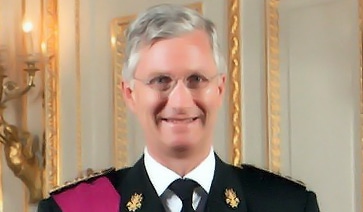
Philippe
The King of the Belgians (since 2013)
1(Brussels, 15 April 1960)
Philippe (Philippe Léopold Louis Marie) is the reigning King of the Belgians, having ascended the throne on 21 July 2013. He is the oldest child of King Albert II, whom he succeeded upon Albert’s abdication for health reasons, and Queen Paola. After his education at the Belgian Royal Military Academy, he studied in Oxford and graduated with a degree in political science from Stanford University in California. In 1999, Philippe married Countess Mathilde d’Udekem d’Acoz, with whom he has four children. King Philippe’s older daughter, Princess Elisabeth, is next in the line of succession.
Prince of Belgium
Prince of Brabant
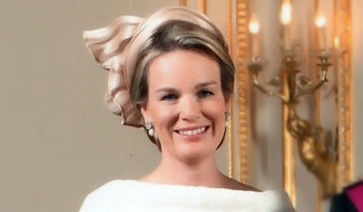
Mathilde
The Queen of the Belgians (since 2013)
(Uccle, Belgium, 20 January 1973)
Mathilde (Mathilde Marie Christiane Ghislaine) is the wife of King Philippe and the present Queen of the Belgians, who ascended the throne following the abdication of his father, King Albert II, on 21 July 2013. She was born Jonkvrouw Mathilde d’Udekem d’Acoz, the oldest of five children and a member of the untitled nobility. Upon her marriage to Prince Philippe of Belgium, the Duke of Brabant in 1999, King Albert II of the Belgians elevated the family d’Udekem d’Acoz from the baronial to the comital rank, hereditary in the male lineage. Being of Walloon origin, she became the first Belgian Queen Consort of native Belgian nationality. She studied speech therapy and worked as a therapist in Brussels. The couple has four children.
Mathilde d’Udekem d’Acoz
Princess of Belgium
The Duchess of Brabant (since 1999)
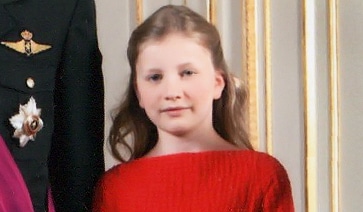
Elisabeth
Duchess of Brabant (since 2013)
1(Anderlecht, near Brussels, 25 October 2001)
Elisabeth (Elisabeth Thérèse Marie Hélène) is the heiress apparent to the Belgian throne. The oldest child of King Philippe of Belgium and Queen Consort Mathilde of Belgium acquired her position and ducal title when her grandfather King Albert II abdicated in favor of her father on 21 July 2013. Elisabeth comes first in the line of succession because she is the oldest child, an important change agreed upon in a new act of succession. If she ascends the throne, Elisabeth will be Belgium’s first Queen Regnante. Elisabeth is the first future Belgian monarch whose education began in Flemish.
Princess of Belgium
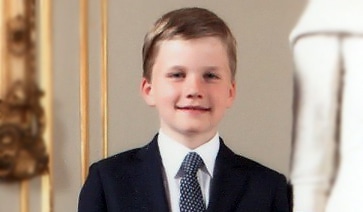
Gabriel
Prince of Belgium
2(Anderlecht, near Brussels, 20 August 2003)
Gabriel (Gabriel Baudouin Charles Marie) is the first son and second child of King Philippe of Belgium and Queen Consort Mathilde of Belgium. He is currently second in line to the throne of Belgium, after his older sister Elisabeth.
Prince of Belgium
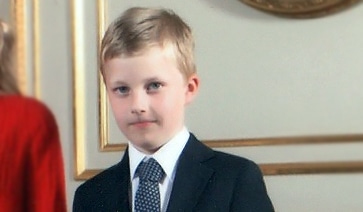
Emmanuel
Prince of Belgium
3(Anderlecht, near Brussels, 4 October 2005)
Emmanuel (Emmanuel Léopold Guillaume François Marie) is the second son and third child of King Philippe of Belgium and Queen Consort Mathilde of Belgium. He is currently third in line to the throne of Belgium, after his older sister Elisabeth and his brother Gabriel.
Prince of Belgium
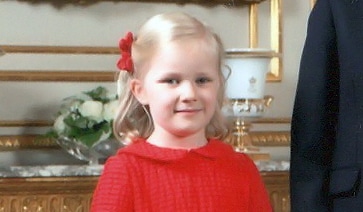
Eléonore
Princess of Belgium
4(Anderlecht, near Brussels, 16 April 2008)
Eléonore (Eléonore Fabiola Victoria Anne Marie) is the second daughter and fourth child of King Philippe of Belgium and Queen Consort Mathilde of Belgium. She is currently fourth in line to the throne of Belgium, after her older siblings.
Princess of Belgium


